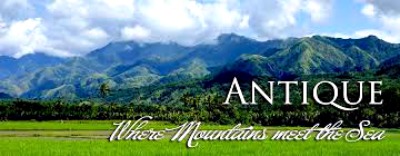Mt. Porras: Antique's Last Forest Cover
Tired of living the city life? Then plan a weekend trek to Mt. Porras, known to be Antique’s last forest cover.
Antique is geographically located in the western portion of Panay Island and bordering Aklan, Capiz and Iloilo to the east, while facing the Sulu Sea to the west. Mt. Porras is an ideal place for relaxation, trekking, camping, swimming, and nature-hopping. It is nestled in an area of almost 5,500.50 hectares and covers the Sibalom Natural Park, so called because of its natural beauty and endowment. Mt. Porras is also the habitat of bountiful species of flora and fauna.
On April 23, 2000, Mt. Porras was declared as a natural park by virtue of Presidential Proclamation No. 282. The barangays or villages covered are Cabladan, Cabanbanan, Caluoy, Tula-tula, Imparayan, Igpanulong, Lambayagan , Luna, Tordesillas, Luyang, Bulalacao, Grasparil, Igparas, Bontol, Bugnay, Indag-am and Villafont.
In this haven where big timber trees, rattan and other endemic trees grow also thrives the world’s largest and rarest flower, the Rafflesia speciosa, so named after its European discoverer Thomas Stanford Raffles. It is the 3rd rafflesia species found in the country and the 19th in the world
Barangay Imparayan takes pride in the fact that this re-discovered flower, nay parasite as it should be correctly named, grows in their locality.
Some years back, when it was first seen to be growing abundantly in the rich soil of Mt. Porras, visitors, both local and foreign, students and science researchers flocked to the site.

Back then, the community was not yet ready for the influx of mountain climbers and trekkers. Some environmentalists and those with genuine concern for the place were somewhat alarmed. Barangay officials, led by Hon. Tito A. Paduganao, found some ways to at least control the entrance of tourists to avoid damage to the area, especially to the endemic trees, the abundant fauna and the rafflesia’s site.
At the opportune time, the community realized that their place has a potential to become a tourist destination. Aside from the rafflesia, although it blooms seasonally and for a brief time only then rots when too much rains seep into its petals, the mountain itself has a story. Local folks would say that this used to be a bald mountain until an American who happened to drop by, pledged to have it planted with seedlings he himself gathered as he traveled around the world. In no time the trees grew and different birds and animals came to make the place their habitat.
When one treks to Mt. Porras, one would surely love the sparkling crystal waters in the creek named Indag-an. The waters would create big waves as it hit big boulders of colored stones. These are gemstones actually, one natural wealth that the town of Sibalom is proud of. These gemstones sparkle from a distance. One giant stone resembles that of a big bird, and in due time, people named it “bato pispis”. Up into the peak of Mt. Porras, there is a cascading waterfall that would entice anyone to take a plunge and enjoy its cool refreshing waters.
Another attraction is the stone wall that somewhat looks like an “altar” of a church. People could not grasp its mystery especially so that there were times they could hear church bells tolling, particularly at 12 noon and at 6 o’clock in the evening.
As natural to a forest-growth area, Mt. Porras is also home to viper snakes, wild pigs, spotted deer and even tiny crabs as small as a thumb’s nail. This tiny creature can survive at the peak of Mt. Porras without water, just dew drops and it emits a shrieking sound at night. So amazing!
One mountain trekker would describe the mountain as a “highway of sound and sights that can feed one’s senses to the hilt.”
With these natural endowments, who can resist but trek up to its peak and enjoy the sounds, the sights and breathe in fresh air and commune with nature - the best things that are for free, and only Mt. Porras can give. (PNA) LAP/AJP/Leah Marlie Pagunsan-Tambanillo/LPT


